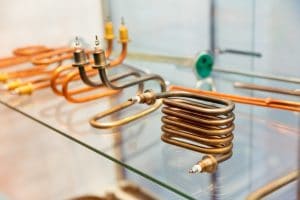 It’s an insurmountable fact that technology requires adequate cooling to operate. Without an efficient thermal management solution, any form of technology would succumb to the excess waste heat that its electrical components generate. However, traditionally, the electrical cooling solutions that companies have relied on have typically been less than efficient, especially when implemented at scale within large industrial settings. Fortunately, meeting the demand for more advanced thermal management has been easier for most companies thanks to the advent of more streamlined electrical cooling solutions. With the ability to rapidly transfer large amounts of waste heat, modern heat exchangers can provide high-performance, air-to-air cooling capabilities to handle most advanced applications’ thermal management needs.
It’s an insurmountable fact that technology requires adequate cooling to operate. Without an efficient thermal management solution, any form of technology would succumb to the excess waste heat that its electrical components generate. However, traditionally, the electrical cooling solutions that companies have relied on have typically been less than efficient, especially when implemented at scale within large industrial settings. Fortunately, meeting the demand for more advanced thermal management has been easier for most companies thanks to the advent of more streamlined electrical cooling solutions. With the ability to rapidly transfer large amounts of waste heat, modern heat exchangers can provide high-performance, air-to-air cooling capabilities to handle most advanced applications’ thermal management needs.
The growing need for efficient cooling
Efficiency hasn’t always been the most important aspect of electrical cooling. More importantly, companies have always required the capability to prevent their technological solutions from overheating, almost at any cost. With older thermal management solutions, that cost was often high amounts of energy and a frequent need for maintenance and unscheduled repairs. This proved cumbersome in many aspects, but as technology has continued to advance, the reliance on older cooling applications became less tenable. Today, efficiency is as important as effectiveness when it comes to electrical cooling, and the ability of modern heat exchangers to optimize more natural air-to-air cooling processes has proven invaluable.
Eliminating concerns of traditional cooling solutions
Before technology became a dominant factor in most companies’ operations, the extensive needs of common thermal management solutions were acceptable for companies to benefit from the technologies they did implement. Yet, the concerns that surround such cooling solutions can become more than companies can successfully handle when limited by traditional cooling capabilities. For example, the more waste heat they have to handle, the more energy older cooling solutions require. The more frequently and consistently they operate, the more likely they’ll experience problems that require unscheduled repairs and more frequent maintenance.
Maximizing the efficiency of air-to-air cooling
While older electrical cooling solutions relied heavily on the use of chilled air and the means to consistently circulate it, modern heat exchangers are designed to utilize a cooling fluid to consistently absorb and transfer the waste heat. This creates a cycle in which the fluid can ensure that electrical waste heat never has the chance to accumulate and cause damage to sensitive electrical components. It also makes the process of electrical cooling much more efficient, as heat transfer techniques require minimal energy and heat exchanger units can operate with little or no maintenance.
For more information about turning air-to-air cooling into high-performance thermal solutions, call Noren Thermal Solutions in Taylor, TX, at 866-936-6736.







